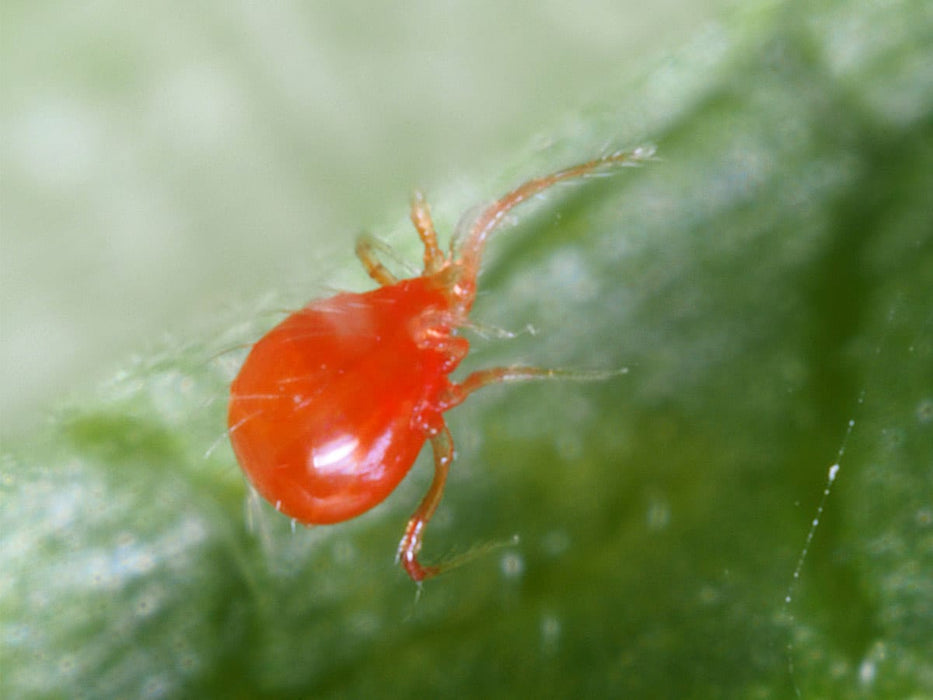
Persimilis
Note: No Bugs for Bugs orders will be despatched between 17-26 December. Limited orders will be despatched from 29 December, with full operations resuming 5 January 2026.
!!PLEASE NOTE THERE IS A $85 QUARANTINE INSPECTION FEE + SHIPPING FOR ALL BUGS FOR BUGS ORDERS TO WESTERN AUSTRALIA!!
Persimilis (Phytoseiulus persimilis) are predatory mites that feed on two- spotted spider mite (TSM) and other spider mite species. Persimilis provide excellent control of these pests in a wide range of crops and they are among the most widely used biocontrol agents globally.
Adult Persimilis feed on all stages of spider mites, eating up to 20 young or 7 adult spider mites per day. Immature Persimilis feed on the eggs and immature stages of spider mites. Persimilis are fast-moving pear-shaped mites. The adults are red or orange and the immature stages are clear. Their eggs are oval shaped, twice the size of TSM eggs, and they develop an orange tinge as they mature. At 25°C Persimilis multiply twice as fast as their prey.
Target pests
- Two-spotted spider mite
- Bean spider mite
Advantages
- Applicable in many field and protected crops
- Consume more spider mites per day than other predatory mites
- Eat all spider mite stages
- Fast development
- Spread well in the crop
- Suitable for drone release
Suitable crop environments
Persimilis do well under humid conditions and in crops with heavy foliage. They perform best at 15-28°C and relative humidity above 60%. They have been used successfully in many protected and field crops, including strawberries, cut flowers, hops, raspberries, capsicums, cucumbers, eggplant, ornamentals, blackcurrants, pome fruit and grapes. Persimilis are not suitable for tree crops in dry climates.
When to release
Ideally Persimilis should be introduced at the first sign of spider mites. If a hotspot is detected early and treated quickly, Persimilis will follow the pest mites as they spread. Inspect crops regularly for the presence of pest mites, especially on the windward side, in dry spots and at edges. If spider mite numbers are already high, consider applying a compatible miticide prior to release.
How to release
Before release, check prior history of chemical applications to ensure toxic residues are no longer present. See notes on chemical use below.
Persimilis are mixed with vermiculite and packed in cardboard tubes. They should be released as soon as possible after delivery. During very warm weather it is preferable to avoid making releases at the hottest time of day. If necessary, the tubes can be stored (on their side) for up to 3 days at 7-10°C.
Roll the tubes gently before release to distribute mites evenly. Remove the end cap, take away the breathable cloth and replace the cap to use as a shaker. Distribute the contents of each tube over the foliage of infested plants. During release keep an eye out for pest hotspots and be prepared to place additional Persimilis in these areas.
After release
Persimilis will be difficult to find for a week or so after introduction. They disperse quickly in search of food. Mark a few places where predatory mites were released, especially those with good numbers of spider mites. These sites can be checked regularly to assess pest numbers and establishment of predatory mites. Look for Persimilis eggs among colonies of spider mites, as this is a good early sign of predator establishment. Initially spider mite numbers may continue to increase, while Persimilis establishes.
If spider mites increase to damaging levels, a compatible miticide can be applied to reduce pest mite numbers. This will allow the predators to catch up. Spot spraying is preferable to blanket spraying.
